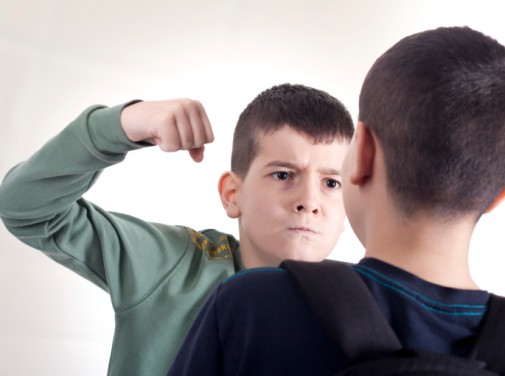Sympathy for the bully

Playground statistics tell a sad story: Every 7 minutes a child is bullied.
Adult intervention occurs in 4 percent of incidents, peer intervention occurs in 11 percent of incidents and no intervention occurs in a staggering 85 percent of incidents. These stats from stompoutbullying.org reflect the national epidemic of bullying.
But what about bullies themselves? Some believe bullies aren’t born, they’re made. And as a community, we can take steps to prevent them from being created or help to disarm them.
Profile of a bully
Vanessa Houdek, a predoctoral clinical psychology intern, explains that bullies are not bad children, but they may be having a hard time expressing themselves. “There’s a misconception that all bullies come from bad families or that the child is inherently bad. That’s not the case at all,” says Houdek who works for Advocate Family Care Network’s Childhood Trauma Treatment Program in the Oak Lawn, Ill and Bolingbrook, Ill offices.
Since any child can potentially become a bully, it’s important to be able to identify the factors that may cause a child to turn to bullying. The biggest culprit tends to be not having an appropriate way to channel and express distressing feeling, such as anger, sadness or fear.
“This can be caused by having parents who don’t model appropriate coping strategies or consequences for aggression,” explains Jennifer Lindskog, also a predoctoral clinical psychology intern for Advocate Family Care Network’s Childhood Trauma Treatment program.
Houdek adds, “If you catch a kid bullying and give them age-appropriate consequences,the bullying will likely be managed in most cases. But if not, you may need to seek outside help with a mental health provider.”
Get involved
Many opportunities exist where we as parents, teachers, peers—and even the bullies themselves—can stem the tide of bullying.
Parents can take active steps to help their own child who might be a bully. It’s important to model appropriate behaviors, Lindskog says, since kids mimic what you do. For example, “Make sure you use fair punishment and not corporal punishment, such as spanking. Help kids empathize with others and see the perspective of other people. Teach them more positive ways to express their emotions or seek help for managing those emotions,” she says.
Houdek adds, “It’s important to recognize that some kids are more impulsive, and it may be more appropriate to get mental health help and counseling.”
Parents also need to educate themselves on bullying since it can come in many forms (physical, sexual, relational, cyber and emotional) that parents may not have had experience with when they were children.
Fellow students can also help. “We need to teach kids how to deal with bullies,” Lindskog says. “One way to stop and prevent bullying is to teach kids to be assertive and stand up for themselves in appropriate ways. Sometimes fighting back or ignoring can escalate the situation, so teach kids to point out behavior, use humor to deflect or talk to an adult so that teachers and parents can work together to decreasing bullying.”
Houdek recommends that teachers pay attention to how students interact and work on restructuring social groups that might include bullies.
“A teacher or parent may tend to dismiss behavior in certain types of kids if they don’t fit the idea of who they think a bully might be,” Lindskog says. “It’s important to pay attention to behavior in all kids.”
Bullies must also take responsibility for their behavior as well. Kids can benefit from learning the things that trigger their bullying, then recognizing how their body responds and channeling that energy in a positive way. “Some kids feel it in their muscles, so squeezing a stress ball may help or using gym class as an outlet,” Houdek offers. “Even one positive friendship in the classroom to offer support can be a coping skill they can use.”
Lindskog says other helpful coping techniques may include:
- Taking a deep breath
- Asking an adult for help
- Journaling about feelings
Bullying is not just the victim’s problem or the bully’s problem. “Bullying is a concern for everyone, for all kids and adults,” Houdek says.
Related Posts
Comments
One Comment
About the Author

health enews staff is a group of experienced writers from our Advocate Health Care and Aurora Health Care sites, which also includes freelance or intern writers.

















Excellent !